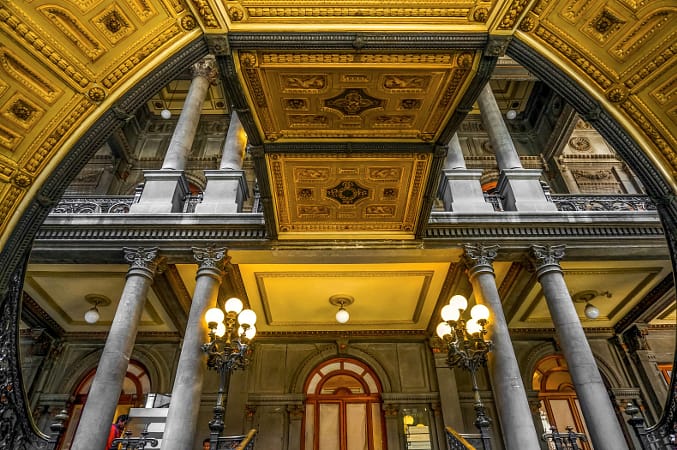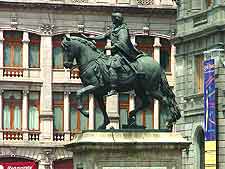

Later in the 20th century, the building served as the Archivo General de la Nación and from 1982 as the Museo Nacional de Arte. In the center is a large semicircular staircase to the upper floors.

The two primary styles seen here are Classic and Gothic with other styles introduced in the forms of sculptures, lighting and sculpted stonework. Like the rest of the building the Patio of the Liones synthesizes a number of different architectural styles. This hall became the preferred place for President Porfirio Díaz to perform public declarations and receive dignitaries from abroad. The work devoted to the concept of progress subdivides into four themes of force, justice, wisdom and wealth. It is profusely decorated with precious metal and crystal ornaments as well as allegorical murals dedicated to themes such as science, the arts, liberty, history, work and progress. The Reception Hall is on the second floor and designed to imitate the splendor of similar halls in Europe. Two rooms that stand out are the decoration of the Reception Hall and the sculptures in the Patio de los Leones. Over the years, much of the Palace deteriorated until around 2000, when Project MUNAL restored the palace to its original look, while also adding the latest technology for the preservation of artistic works. The decorative elements of the building were done by the Coppedé family of Florence, who designed the door knockers, the window frames, the leaded crystal, the stonework, the furniture, lamps and ironwork among many other elements. This blending would later solidify into a movement called “modernismo” both because of the tendency to use newly devised construction techniques and the tendency to use metal in the decorative aspects, to symbolize progress in the Industrial Age. The architectural design is eclectic, mixing elements of past architectural styles, which is characteristic of that time period. The Palace was constructed on the former site of the hospitals of San Andres and of Gonzalez Echeverria.

In the early part of the 20th century, the government hired Italian architect Silvio Contri to design and build this “palace” to house the Secretariat of Communications and Public Works, with the intention to show Mexico's commitment to modernization. MUNAL is located in the old Palace of Communications.


 0 kommentar(er)
0 kommentar(er)
